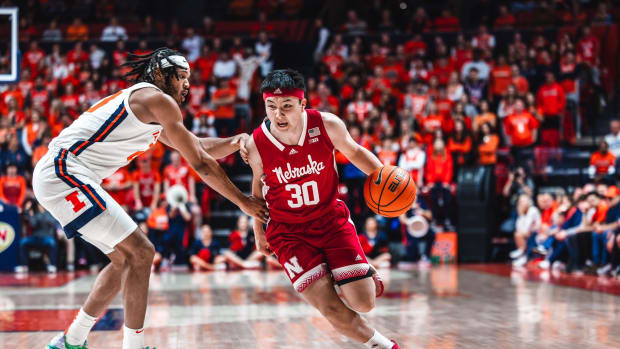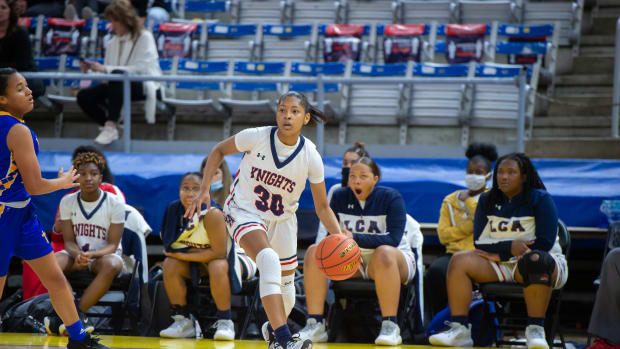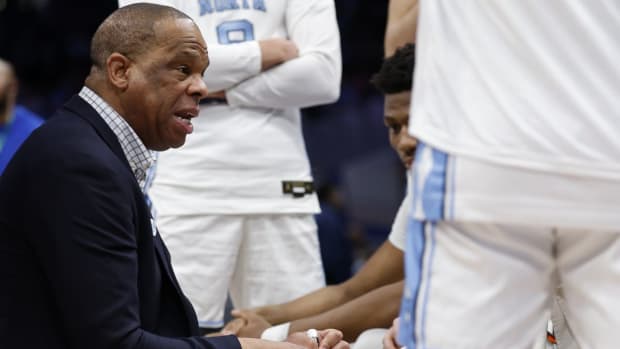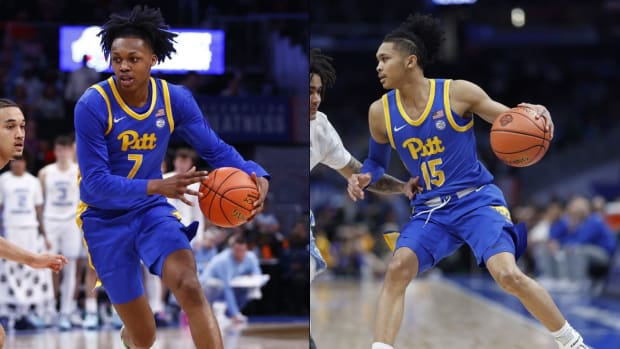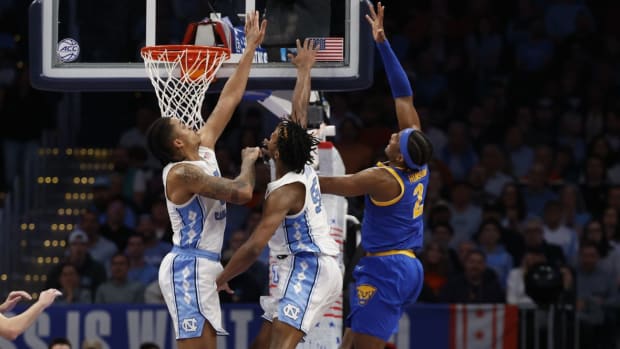The Pac-12's Embarrassing Non-Conference Showing Runs Deeper Than Its On-Court Struggles
Last season, the Pac-12 became the first major conference to not have a team in the NCAA tournament's Round of 32 since the Big 12 formed in 1996–97. Somehow, rock bottom has reached an even lower point for West Coast basketball as we enter conference play in 2018–19.
There aren’t any Pac-12 teams ranked in the most recent AP poll, the first time that’s happened for the conference since the 2011–12 season. The highest-ranked Pac-12 team on kenpom.com is Oregon at No. 39. Arizona State, at No. 46, is atop the conference in the NCAA’s NET rankings.
This shouldn’t be a surprise to anyone who has watched the Pac-12 play basketball this season. Just take a look at this past Saturday’s results. Arizona State, coming off the conference’s biggest win this campaign over Kansas, lost as a 14.5-point home favorite to Princeton. UCLA lost by 15 points at home to Liberty, the final straw for Steve Alford’s tenure in Westwood.
Santa Clara beat Washington State, as the Cougars joined USC as Pac-12 teams that have suffered defeats to the No. 209 team on kenpom. (In fact, those are the only two teams that Santa Clara has beaten that are ranked inside the top 300.) Utah lost by 15 at home to No. 7 Nevada. Cal stumbled 82–73 at home to Seattle, rallying after falling behind 21–4 to start the contest.
Saturday's dismal day was only a microcosm of the league's struggles. Overall, the Pac-12 finished 38–36 in the month of December. According to ESPN, it’s the first time in the past 20 years that a major conference has finished with a winning percentage below .600 in December. And it’s not like the Pac-12 was close either, as 38–36 equates to .514.
Let’s dive deeper though. On the season, the conference has more sub-200 losses (six) than top-50 wins (five). In fact, the Pac-12 has compiled a ghastly 5–26 record against top-50 competition, with Arizona State collecting three of those victories. The conference isn’t much better vs. top-100 competition, as evidenced by its 11–48 mark. Arizona State at 3–2 is the only Pac-12 team with a winning record against top-100 opponents.
The poor records are one thing, but the Pac-12 hasn't even been competitive against top teams. In its 31 games against top-50 opponents, Pac-12 teams have lost by double digits 20 times. Five wins in 31 games against top-50 opponents is already unfathomable, but consistently not coming close in these affairs is a major problem.
Roundtable: Sleeper Team Picks to Win a Conference Title
The Pac-12 is not just one NCAA tournament bid-bad. It’s so historically awful that a majority of the league will likely not even be considered for the NIT.
So what’s going on here? Is it a talent issue?
Per 247Sports’s recruiting rankings, six Pac-12 teams (Oregon at No. 3, UCLA 6, ASU 11, USC 18, Stanford 20 and Arizona 22) finished with a top-25 recruiting class in 2018. That was tied with the SEC for the most among major conferences, followed by the ACC (4), Big Ten (4) and Big 12 (2).
Three other Pac-12 teams (Utah, Washington and Cal) finished with top-50 recruiting classes. So 75% of the conference finished with a top-50 recruiting class, a higher percentage than any other major conference can say.
In the past four recruiting classes (starting with 2015’s group), the Pac-12 has recorded 21 top-25 recruiting classes. In comparison, the ACC and SEC each had 22, while the Big Ten and Big 12 sat at 11 and 8, respectively. Additionally, the Pac-12 has averaged 8.5 top-50 recruiting classes over the past four years, with Washington State being the only school unable to lock one down in that time frame.
There are seven programs nationally that have finished with a top-25 recruiting ranking each of the past four years: Kentucky, Duke, Kansas, Texas, Arizona, Oregon and UCLA. Obviously the Pac-12 teams don’t compare to Kentucky, Kansas and Duke right now. While Texas has disappointed under Shaka Smart, the Longhorns still have more top-50 wins this season than Arizona, Oregon and UCLA combined.
If the talent level is seemingly on a level playing field (or better) compared to the other major conferences, why has the Pac-12 won just 18.6% of its games against top-100 opponents and lost 45.8% of its games against top-100 opponents by double digits?
The spotlight has to be shone more brightly on the coaches. Steve Alford’s underachieving time at UCLA is over. But he’s not the only one falling short of expectations. Sean Miller has seemingly had the title of “best coach to never make a Final Four” for the past five years. Andy Enfield has done a great job stockpiling talent at USC despite inheriting a bare cupboard, but the Trojans are 0–10 the past two seasons vs. top-50 opponents, with eight of those being double-digit losses.
The loss of Reid Travis to Kentucky was a major blow, but there’s no way Stanford under Jerod Haase should be a sub-100 team on kenpom after back-to-back top-20 recruiting classes. Barring winning the Pac-12 tournament, this will be the third straight year that Utah’s Larry Krystkowiak, Colorado’s Tad Boyle and Oregon State’s Wayne Tinkle will be sitting out the NCAA tournament.
WOO: Who Will Be 2019's College Hoops Breakout Stars?
Oregon’s Dana Altman is the only Pac-12 coach to reach a Final Four. Altman, Miller and Washington State’s Ernie Kent (who had a 47–77 record entering his fifth season in Pullman) are the conference’s only coaches to reach the Elite Eight. The star power holding the clipboard for the other major conferences is a rather enormous gap to that of the Pac-12’s. In terms of X’s and O’s, these coaches have dominated the Pac-12 in recent non-conference play.
And why would a rising star or established Hall of Famer leave his job for a Pac-12 offer? The revenue in the Pac-12 is lagging well behind other conferences. The Pac-12 Networks are a joke in terms of national exposure, as some Pac-12 games might as well be played in Narnia and they’d get similar ratings. As long as the league remains as down as it is, it’s also tougher to nab an NCAA tournament bid due to fewer chances to pick up quality wins in conference. Building a résumé in Pac-12 play has become closer in resemblance to a mid-major than the SEC.
Speaking of the SEC, it was a national punchline earlier this decade, when only three of its 14 teams made the NCAA tournament in 2016. What did SEC commissioner Greg Sankey do to resolve the issue? He hired a special adviser to the commissioner for men’s basketball, former Big East commissioner Mike Tranghese. The teams also started hiring a mixture of big names (Rick Barnes, Ben Howland and Tom Crean) and rising stars (Will Wade, Kermit Davis, Bryce Drew). Barnes and Howland have each made a Final Four, while Wade, Davis and Drew each had multiple NCAA tournament appearances under their belt.
Granted, the SEC can afford to make splashier hires because its TV deal is a cash cow compared to the Pac-12’s. According to USA Today, at least five Pac-12 coaches made less than $2 million last season (Enfield and Haase’s salaries weren’t listed). On the flip side, every SEC coach listed made at least $2 million, and eight earned at least $2.5 million.
There are some Pac-12 programs that can snag a big-time coach. Miller, Krystkowiak, Altman and Alford all made at least $2.6 million last season. But when so many Pac-12 teams can’t afford to do so, it brings down the middle and lower tier teams of the league, hurting the entire conference. The SEC is a much better league now than it was because there are a lot more competitive teams.
Even with elite talent, the Pac-12 will continue to fall behind in basketball if it continues to get outcoached on a nightly basis. Maybe this will be a wake-up call for Pac-12 commissioner Larry Scott to take similar drastic measures like Sankey did.
For now, expect a similar formula for conference play in Pac-12 basketball as has become the norm under Scott in football: The teams cannibalize themselves in conference play, no great teams emerge and then the league becomes a laughingstock in the postseason.
